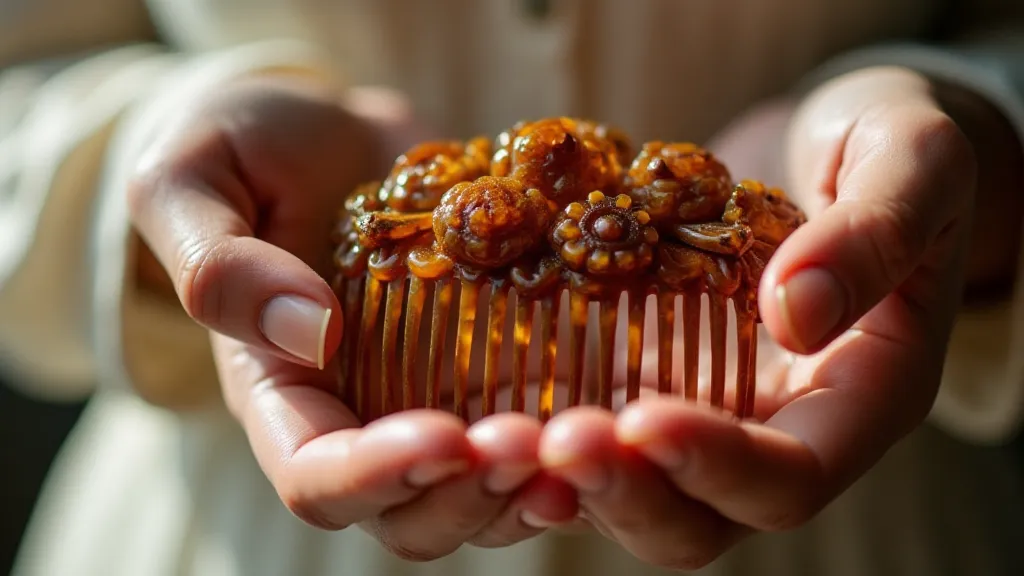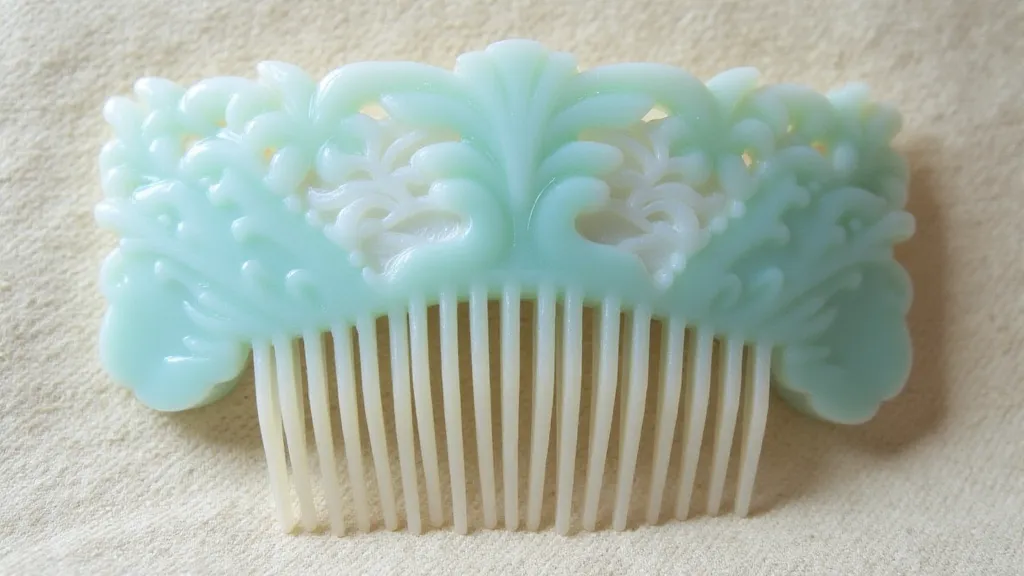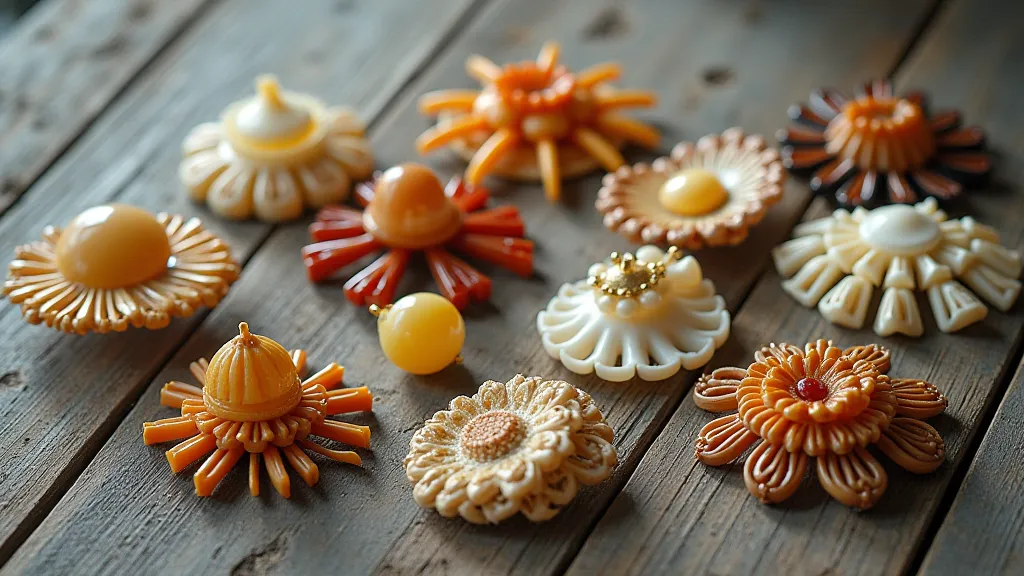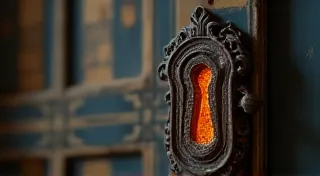The Weight of a Memory: How Collecting Rituals Shape the Writer’s Eye
The small, cool weight of a vintage hair comb in my palm – that’s where it begins. Not with a desire for acquisition, but with a quiet resonance, a subtle vibration of history that seems to hum against my skin. I’m a writer, and while my days are often consumed by crafting fictional worlds, my evenings are increasingly spent immersed in the tangible beauty of the past: specifically, the world of vintage hair combs.
It's an unexpected passion, perhaps. I never considered myself a 'collector' in the traditional sense. For years, my focus lay solely on words, on weaving narratives. Yet, the process of collecting isn’t just about accumulating objects; it's a meticulous ritual of curation, contemplation, and unexpected discovery. And that, I've realized, aligns profoundly with the writer's journey.
My initial foray into vintage combs was accidental. Browsing a flea market, a particular tortoiseshell comb, its surface delicately etched with floral patterns, caught my eye. It wasn’t the monetary value that drew me in, but the feeling it evoked - a whisper of elegance, of a time when meticulous detail and artistry were integral to everyday life. The vendor, a woman with knowing eyes, simply said, "It's seen some stories." And she was right.

More Than Meets the Eye: History in Miniature
These weren’t merely tools to keep hair in place; they were status symbols, expressions of personal style, and often, heirlooms passed down through generations. During the Victorian era, hair combs became increasingly elaborate, reflecting the burgeoning middle class’s desire to emulate aristocratic fashion. Jet combs, mourning jewelry’s close relative, were ubiquitous after Queen Victoria’s prolonged mourning period for Prince Albert. Horn, bone, shell, and later, Bakelite and celluloid were molded and carved into intricate designs. The materials themselves tell a story: the gradual shift from natural materials to early plastics reveals a changing world, a transition from handcrafted luxury to mass production – a theme ripe for exploration in any narrative.
I began researching the types of combs I acquired. French combs, known for their delicate filigree work. Horn combs, common and practical. Later, the Art Deco era brought a boldness of geometric shapes and vibrant colors. Each comb became a tiny window into a specific period, revealing the aesthetic preferences and social customs of a bygone age. The details are astonishing: the subtle variations in carving styles, the evolution of popular motifs (forget-me-nots, lilies, roses), even the placement of tiny, almost imperceptible imperfections – each element contributing to the comb’s unique character and historical significance.
The Writer's Eye: Observation and Detail
As a writer, I’m constantly striving to hone my observational skills. To capture the essence of a moment, a person, a place – it demands a meticulous attention to detail. Collecting vintage hair combs has unexpectedly amplified this ability. It’s forced me to slow down, to truly see. Not just to identify an object, but to understand its context, its history, its silent narrative.
Consider the challenge of assessing authenticity. Is that Bakelite truly from the 1930s, or a later reproduction? Examining the material’s weight, the subtle nuances of its coloration, the presence of tiny manufacturing flaws – these are skills that translate directly to writing. Just as a writer must analyze a character's motivations, a collector must dissect the history of an object. The ability to discern truth from imitation, to identify the authentic voice, is paramount in both endeavors.
The writer's craft requires a willingness to unearth hidden narratives. A comb isn't just a comb; it's a silent witness to countless moments – laughter, tears, romance, loss. Imagining the hands that held it, the hairstyles it adorned, the events it silently observed—these are the sparks of creativity that ignite my writing.

Restoration and Respect: A Gentle Touch
Many of the combs I find require a degree of restoration. Not a full-scale overhaul, mind you. I believe in preserving the patina of age, the subtle signs of a life lived. A bit of gentle cleaning, a careful removal of surface grime – just enough to reveal the comb’s inherent beauty. This approach mirrors the writer’s responsibility to edit and refine their work. It's about removing the unnecessary, clarifying the message, while respecting the original intent. Heavy-handed restoration destroys the essence of the piece, just as excessive rewriting can strip a story of its authenticity.
Learning about the materials – the properties of Bakelite, the fragility of celluloid, the importance of proper storage – has also fostered a newfound respect for craftsmanship. These weren't mass-produced items churned out by machines; they were the result of skill, patience, and a dedication to artistry that seems increasingly rare in today's fast-paced world. The comb's design speaks to a society that valued durability and elegance, in direct contrast to our culture of disposability.
Beyond the Object: The Echo of Experience
Ultimately, collecting vintage hair combs isn’t about accumulating objects; it’s about connecting with the past. Each comb is a tangible link to a previous generation, a silent testament to the enduring power of human creativity and the enduring appeal of beauty.
And as a writer, I find that these small, seemingly insignificant objects offer a profound source of inspiration. They remind me of the importance of detail, of authenticity, of the power of observation. They encourage me to slow down, to look beyond the surface, and to listen to the stories that lie hidden beneath the patina of age. They provide a tangible weight, a grounding influence, and a constant reminder that even the smallest things can hold immense meaning – a weight, indeed, of memory.






